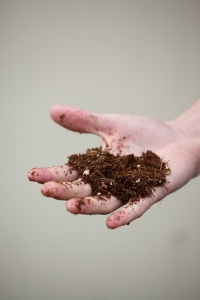
It’s a few days past spring, and your fingers are getting itchy. Sure, where you are it might be frozen and snowing, or perhaps it’s been balmy weather all winter. But in the northern hemisphere, the spring equinox signals the time when nature heralds us to head out into the garden once again, or at least start planning for the time when the snowdrifts taper off a bit.
What’s in my garden? There’s a whole lot of soil. My cover crop experiment worked to a degree. I was testing out fava beans as a cover crop, but given our Pacific Northwest rain I think that the seeds turned into soil instead of growing them into big, nitrogen-rich mulch plants. There are a few perennials and early greens like sorrel popping up, with more to come, so I need to work around those. There is also a layer of leaves over part of the garden, leaves that I added to provide a bit of protection for the winter.
What’s left of the cover crop and the leaves will go into the garden soil and enrich it for this year’s new plants. However, given the blasting rain in the Pacific Northwest and the ice and snow elsewhere, it’s good to replenish your soil regularly to ensure that all of those nutrients don’t head right off into the spring runoff.
One way to replenish your soil is through fertilizer. You don’t need to use artificial fertilizers. A kelp-based organic fertilizer will do your garden good as well. Natural fertilizers are like the health food of the fertilizer world – gardens use up these nutrients slowly over time instead of having them move through the system all at once.
However, fertilizer is only one tiny piece of a regular garden soil maintenance program. Add compost and mulch into the garden to increase soil aeration and soil fertility after the long winter. If you’ve lost soil over the winter, add high-quality compost or a product like Sea Soil to add good fertility to your garden. While potting soil is good as a lightweight soil mix, it’s also fairly lightweight on the nutrients.
In the winter, adding a cover crop like those fava beans or rye grass can help your spring soil. You don’t eat these cover crops – your garden eats them. Mulch the remains of the crop into the spring soil, and you have important nitrogen and lots of fiber for the garden.
Image courtesy of D. Sharon Pruitt at Stock Exchange.

